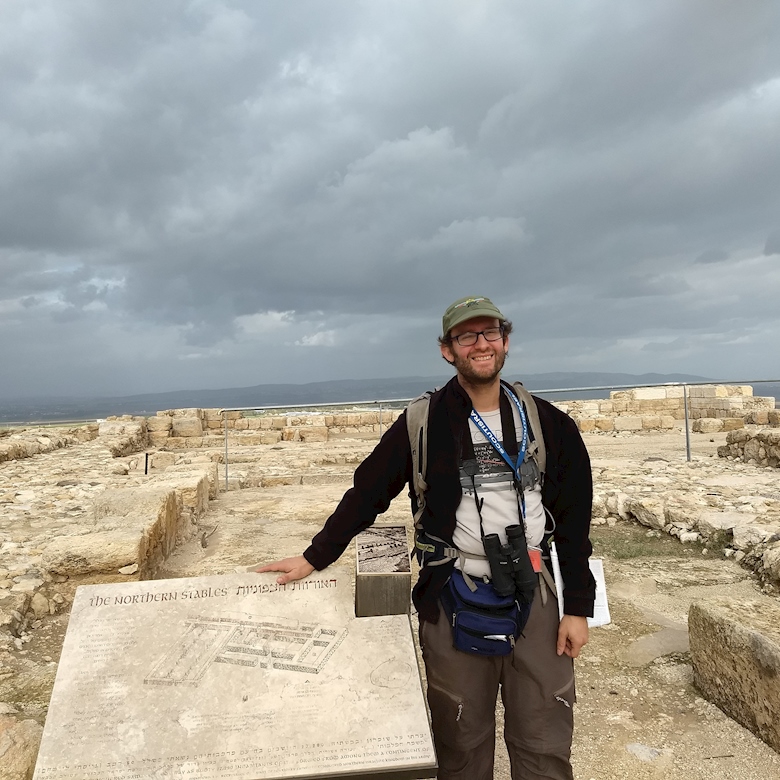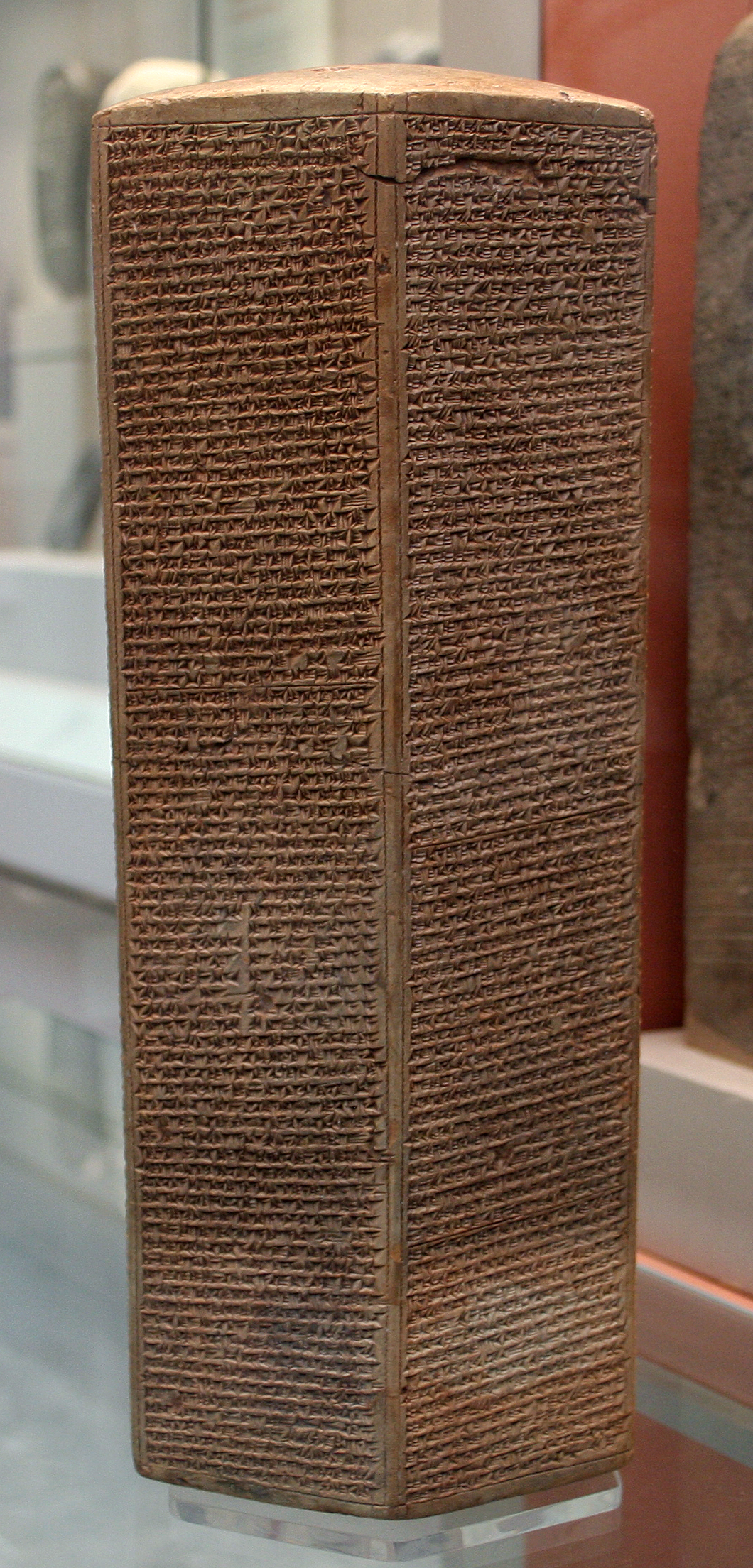
Continuing from my last Podcast I am now dealing with the historical issues surrounding Josiah. I tell the dramatic story of the battle of Armageddon and finally answer the question: who is the evil King?


Continuing from my last Podcast I am now dealing with the historical issues surrounding Josiah. I tell the dramatic story of the battle of Armageddon and finally answer the question: who is the evil King?
If you’ve been following my podcasts recently you might know that I’ve been talking mainly about King Hezekiah and his son Menashe of Judah. Hezekiah lived around the same time as the Assyrian Emperor Sennacharib 705-681 BCE. There is a clay prism in the British Museum which chronicles Sennacharib’s life. It mentions Hezekiah too. It describes Sennacharib’s conquest of Judea and siege of Jerusalem.
(If you are looking for the podcasts scroll to the bottom of the page)

The Taylor Prism viewable in the British Museum
The British Museum used to have a complete transcript available online. It got removed, I will update this page with any further resources.
In addition to the Prism there is also a display in the British Museum of a wall frieze of the siege of Lachish, a town in the foothills of Judea. This siege is both mentioned on the Prism depicted above and the Bible, namely in the book of Kings (II Kings 18) and Chronicles (II Chronicles 32).
The Frieze includes:
A depiction of Sennacharib sitting on his throne at the gates to the city:

Source : Wikimedia Author : User:oncenawhile
Depictions of the battle:

Photograph by Mike Peel (www.mikepeel.net)
And, as mentioned in the podcast the capture and punishment of enemies, possibly a cruxifiction, possibly a flaying, what do you think?

Source: Wikimedia Author: Zunkir
Fairly recently an archaeologist called Eilat Mazar found an official Bullae or clay stamp of Hezekiah in an archaeological park called the City of David. I have also sketched my observation of the stamp. Note that the lettering is “Proto – Canaanite script and the “logo” of Hezekiah is a sun with wings and an Ankh.
If you listen to the podcasts posted at the bottom you will hear that this is part of the evidence confirming both Hezekiah (podcast 8) and Menashe (Podcast 9) as historical actors.

Source: Wikimedia Author: Rubén Betanzo S.
Similar “logos” were found on numerous jug handles from the same era possibly for the collection of money or produce for the King, in fact “for the King” was written on many such handles.
In addition to this we have a 533m long tunnel outside the Old City of Jerusalem amongst other building projects that as you will hear in podcast 8 Hezekiah and later Menashe (Podcast 9) build structures that include the tunnel depicted below.
On Tour at Hezekiah’s tunnel, City of David
If you want to help: please share this article.
In order to produce more articles and podcasts I need to pay bills, contributions will be happily recieved by clicking on the coffee mug below.
I’m in the process of uploading my podcasts to YouTube.
This is the latest upload.
A discussion of scriptural references to Arameans in the Passover Seder and their connection to Isaac and Rebecca and Jacob and Esau.
I focus specifically on the verse in Deuteronomy דברים 26:10 :
Either:
“My father was a wandering Aramean”
Or
“An Aramean oppressed my father”.
Which translation do you favor?
Leave a comment and tell me.
I started a new YouTube channel with a new project called Pop up Docu-tours.
Here’s the first video, it’s a general overview of the Old City from the Haas Promenade.
The “Shfeila” or Judean Foothills is the area between the Jerusalem Hills and the Coastal Plain. It has been the battlefield of Judea for more than 2000 years. The soft chalk hills crowned with grassy meadows are a perfect home for many plants and animals. Join me on a fun family adventure, exploring the Foothills of Judea.
Itinerary:
It is believed that the Herodion Temple Mount took much longer to build than Herod actually lived for. Consider how long it must have took to even build the machinery and work out the engineering to build the entire massive structure.
The Temple Mount had 140,000 square meters surface area. The Western Wall is 488 meters in length alone. The largest stone is well over 280 tonnes (some say 570 tonnes). According to the Christian Scripture it took more than 46 years to build (John 2:20).
It is highly likely that , not unlike this blog, there were many starts and stops!
Stay tuned for more interesting and entertaining blogs, podcasts and videos!
Bibliography
Yalkut Shimoni: Midrash al Torah, Neviim u-Khetuvim. Yarid ha-Sefarim, Jerusalem 2006
Hagadah (any version with English translation)
Bibliography
Hittite Treaties and Letters, D. Luckenbill
The American Journal of Semitic Languages and Literatures
Vol. 37, No. 3 (Apr., 1921), pp. 161-211
Reflections on The Mitanni Emergence, G. Schwartz
Berlin Studies of the Ancient World, Vol. 17
The Beginning of Desire: Reflections on Genesis, A Zornberg
Image Books 1996
Studies in Bereishit, Nechama Leibowitz
Jerusalem, WZO, 1976
Pseudo Translation of Yonatan ben Uzziel:
http://targum.info/targumic-texts/pentateuchal-targumim/
Please see the main Bibliography for more.